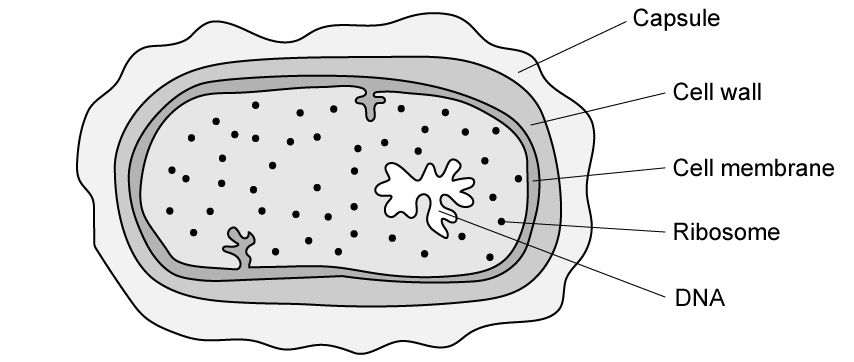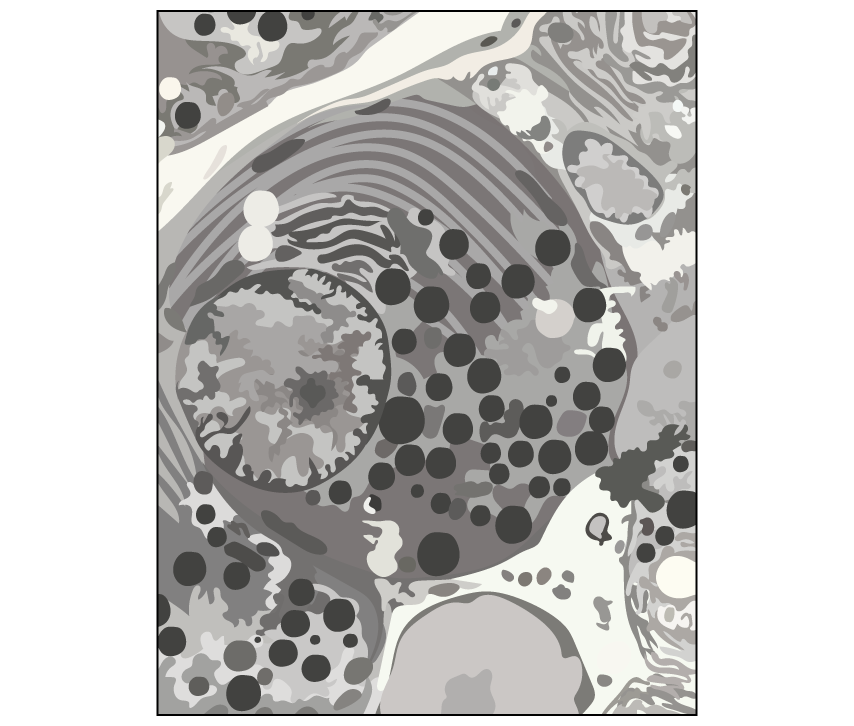Question 1
Which row correctly compares the magnification and resolution of an electron microscope with a light microscope?
| Magnification | Resolution | |
| A. | Lower | Higher |
| B. | Higher | Lower |
| C. | Higher | Higher |
| D. | Lower | Lower |
Which row correctly compares the magnification and resolution of an electron microscope with a light microscope?
| Magnification | Resolution | |
| A. | Lower | Higher |
| B. | Higher | Lower |
| C. | Higher | Higher |
| D. | Lower | Lower |
The diagram shows a type of prokaryotic cell, a bacterium.
Which three structures are found in both an animal cell and this bacterium cell?
cell membrane, cell wall and DNA
cell membrane, DNA and ribosome
capsule, DNA and ribosome
capsule, cell membrane and cell wall
Which of the following can not be viewed using a light microscope?
Nucleus
Cell wall
Chloroplasts
Ribosomes
The image below shows an electron micrograph of a specialised cell. 
Based on the image, which of the following would correctly identify the function of this specialised cell?
This is a cell found in a gland that secretes enzymes for digestion.
This is a cell that carries out photosynthesis in the leaf of a plant.
This is a cell that transports oxygen around the body in the blood.
This is a cell that absorbs nutrients from digested food and transports them into the food in the small intestine.
Which of the following correctly identifies the process that allows prokaryotic cells to reproduce?
Mitosis
Binary fission
Fertilisation
Meiosis